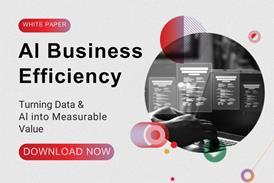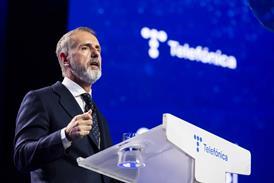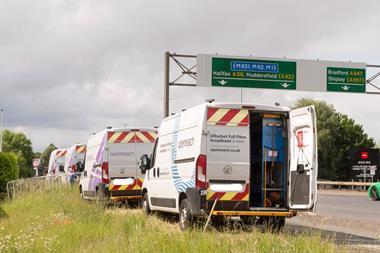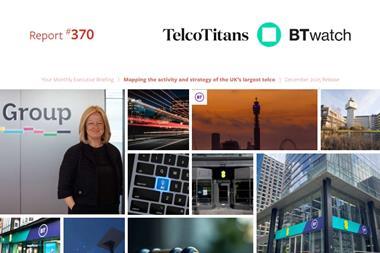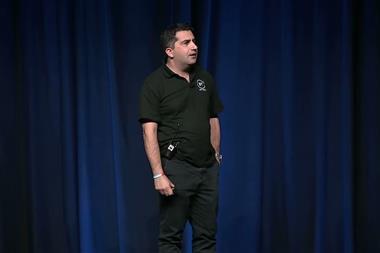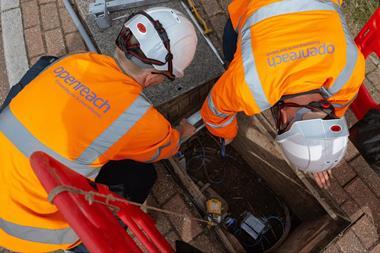- As 5G SA becomes reality, operators are modernising network lifecycle assurance to realise the potential for faster and more flexible service delivery.
- Assurance is now a priority permeating a widening range of functions, including finance and ESG, as separation between testing in the lab and delivering the live network blurs, and the physical becomes virtual.
- Inherent strengths like resilience and pragmatism give operators’ advantage, including winning in new digital markets through incremental early changes.
- Spirent is spreading word of the ‘incredible’ operational and financial returns available from unified, on-demand network and service assurance, including monetisation via enterprise customers.

With the emergence of standalone 5G (5G SA) network technology, telecommunications operators around the world are facing a fundamental transformation, according to Doug Roberts, Spirent’s Senior Vice‑President of Lifecycle Assurance.
The industry is being obliged to rethink many of its preconceptions as the foundations underpinning infrastructure become virtualised and software‑based through developments such as open RAN. Roberts sits at the centre of this foundational shift, drawing on Spirent’s competency of testing and assurance, which is becoming even more integral to telco network and service delivery.
Spirent has embraced agile cloud-centric change itself, extending and reimagining its proposition in order to seamlessly support operators’ business cases for delivery and monetisation of 5G services. For Roberts, the “‘Eureka!’ moment” came upon recognising that “for the first time ever, the network itself is now acting and behaving operationally as an application development environment”.
“The network is no longer a series of boxes that are self-owned, self-managed, and self-maintained; it’s a massive disaggregation of virtual nodes — and that’s different. It’s very, very different. ”
Roberts.
While this elemental change accompanying 5G SA is opening up new opportunities for communication providers to expand their reach and portfolio, it is also exposing the sector to upheaval and greater competition. Hyperscalers are being drawn to new service areas as the lines between telco and techco fade in the cloud‑first era. Disruptive new digital communications providers such as DISH Network and Rakuten are also emerging to take on established operators, unburdened by the weight of legacy technology and business models and so able to adopt innovative approaches with a clean slate.
These developments are significant, and will require decisive and meaningful shifts in strategy from the world’s telco majors. Nonetheless, Roberts firmly believes that operators’ inherent strengths and assets offer a way forward that embraces the potential of virtualised disaggregated infrastructure without compromising traditional industry values.
“For operators looking at 5G SA deployment, the question is ‘how fast can you learn?’, and then, more importantly, ‘how fast can you adapt to those learnings to get the ship steered in the right direction?’. We [at Spirent] believe we can help accelerate that for any service provider, but it depends on how quickly they recognise the moment we’re in. ”
Roberts.
Fire-starter DISH prompts CI/CD rethink at rivals
Spirent is a key contributor to challenger DISH Networks’ plans for a 100% software‑driven, cloud‑native 5G core infrastructure, built on autonomous software driven through a continuous integration and continuous delivery (CI/CD) funnel. The anticipated commercial launch of such a network in the USA has, Roberts notes, “lit a fire under certain telco communities”, including many tier-one and tier-two operators, and is encouraging them to re‑evaluate how they work. DISH is currently implementing cloud‑native Spirent software for certification pre‑deployment in a virtual lab, and intends to use “the exact same” test case library in a live operational context “from the first moment they translate that infrastructure into revenue-bearing service delivery models”.
When a software-based certification lab can be deployed via the cloud, with services transitioned into a live operating environment “at basically the click of a button”, traditional physically and functionally detached practices become obsolete. Further, as the network becomes a continuous and autonomous always‑on software entity, it may become essential for operators to actively engage in the new over-the-top service provider community or “risk becoming just the plumbers of the next century”.
This transition does not need to involve a ‘Big Bang’ change. Operators can take an incremental approach to what is a radical renaissance moment, for example, by initially embedding a virtual test agent capability. This might be: within physical hardware; a virtual element or node linked to a session management function; access and mobility management; or, the user plane. The key step is to move from a ‘test and certify’ mindset to a CI/CD approach.
Roberts asks “why not let that virtual agent infrastructure you already have in the lab follow that infrastructure into the live network?”. He believes the possibilities for creating new revenue opportunities could also be significant.
Enabling quick wins while securing 5G SA future
For the mobile communications sector, much of the ideation to monetise 5G depends on assured service quality, with the long‑term potential for the next‑generation network edge considerable.
However, the nascent nature of emerging edge services prompted Roberts to describe the current state of meaningful service level agreements (SLA) as “very sobering”.
This deficit needs resolution in order to deliver on the promise of reliability and latency levels able to support autonomous vehicles, and the flexibility of a virtualised infrastructure to open up new premium options around private networks and network slicing. New offerings take time to reach maturity, too, and Roberts notes that, while cloud players can provide ‘five‑nines’ reliability for mature services, “when you pivot to a 5G private network, for example, those SLAs are gone”.
For telcos, this presents a clear opportunity to build on established credentials for delivering cast‑iron guaranteed service.
“A hyperscaler might be able to spin up a 5G private network, but it’s likely to be ‘best effort’ delivery. Now a telco can say ‘I will provide you with a 5G private network with guaranteed SLAs in specified markets, wherever you need, and do this for a marginal uplift on a network you’re already paying for’. That does represent a strategic advantage, but you have to bake that ‘measurable capability’ into the infrastructure to reap the benefits down the road, and do that now. ”
Roberts.
As 5G SA progresses, Roberts is seeing this shift among operators from a focus on the still‑theoretical potential for the technology in the long‑term, towards areas where the technology can fulfil the needs of real buyers, right now. This has prompted promotion of offerings based on super‑low latency edge services, targeting fields such as financial trading, with North American markets notably at the fore.
“Smart operators are zooming in on actual markets with tools and capabilities that are going to help accelerate business. To actually make money, we need to park ‘the art of the possible in two or three years’ time’, and talk to customers about more immediate solutions. ”
Roberts.
Value of pragmatism in pursuit of innovation
For Roberts, when it comes to their position on innovative networks and technologies, operators around the globe can be found on a spectrum ranging from ‘bold visionary’ to ‘quieter pragmatist’. While the more ambitious claims garner headlines, they do not always translate into deliverable services, which can lead to a credibility gap.
Roberts identifies BT as an operator within the pragmatist class, and one that is using its commitment to resilient services to ensure that its voice is being heard on next‑generation initiatives. “BT won’t use a megaphone ten-times the size of its practical ability to execute behind the scenes. It’s the basis of a reputation around having world-class lab capabilities and facilities”, he says, “and we see that practically: they’re going to do it and, when they deploy a service, it’s going to be done right”.
Changing mindset to integrated assurance and delivery
Roberts contends that approaches to service assurance, testing and operational resilience have yet to fully evolve to reflect the new network and technology environment, with systems still verticalised in labs — where pre‑production, operationalisation, and product portfolio development are separately stacked, and with the live environment treated as a different area altogether.
He urges review of the journey of virtualised network functions as they move from certification, through pre‑production, and into live deployment, to reimagine this as one contiguous software path. “That is what’s fundamentally different about 5G as a standalone infrastructure and architecture”, he says.
The Spirent exec sees a clear logical win from erasing the current demarcation. “If you trust an assurance vendor to certify your infrastructure to the highest standards possible, then why would you not use that same vendor to keep 24/7 tabs on that infrastructure once it goes live?” he asks, “and the short answer is simple: you should trust it”.
“Operators have to make that conscious proactive decision that they’re going to view assurance as an enabler for gaining a substantial competitive advantage. It’s not just ‘a cost centre’. It’s not just ‘paying to certify stuff’. That mentality has to change. ”
Roberts.
In embracing a more integrated approach to assurance, digital communications providers will also be opening up new opportunities for revenue-generating activities, including managed offerings around Testing‑as‑a‑Service.
With the ‘softwareisation’ of networks, and Spirent’s own transformation, Roberts highlights that partnering between the assurance provider and operators is also building traction. This collaboration is described as a “clear and present value differentiator” in the digital age, where operators can be competing with hyperscalers and systems integrators, as well as working with them.
Supporting financial and ESG goals
With the emergence of software-only, cloud-native network assurance services, offered via an on-demand CI/CD model, Roberts is seeing a modern twist on a longstanding topic of interest for operators: lab consolidation.
He does not see this as merely an opportunity to take multiple large sites and meld into a single mega-facility, but also to rethink their capabilities and demands “and virtualise them in a pre‑existing piece of infrastructure”.
Roberts highlights that not only are physical labs capital intensive and costly to operate, they also enlarge operators’ carbon footprints at a time when environmental, social and governance metrics are increasingly important as operators pursue net zero goals “and the world is watching”.
“Management should be asking, ‘if we can provide assurance by deploying software in an existing hyperscaler centre, why aren’t we doing it?’. ”
Roberts.
“Because of what we do together in terms of testing and certifying infrastructure, operators can deliver always‑on virtual agents that can provide visibility on performance directly through to the customer base. ”
Roberts.
5G’s ecosystem explosion is another opportunity and challenge that Spirent considers should be drawing operators towards greater use of live testing environments as a NetDevOps mindset emerges. This will increasingly demand new approaches to managing performance metrics and budgets, and requires moving at pace to capture the growth opportunities that will accompany this expanded playing field, as outlined by Spirent’s team in a discussion with TelcoTitans, Interdependence Day — taking testing out of the lab.
Spirent breaks out of the lab to fuel transformation
Spirent’s own commercial model has pivoted to reflect market evolution and the transition towards a horizontal testing continuum.
Roberts describes this new commercial model as based on an outcome‑driven service, enabling a blend of virtual and physical test and assurance elements to be deployed across a range of network and service locations at scale and through the entire lifecycle of an offering.
Growing demand for assurance in live 5G networks was a key driver for Spirent through 2021, with record‑level, double‑digit revenue growth in the segment boosted by adoption of end‑to‑end solutions, particularly among cloud-based service providers.
Spirent also saw growing demand for automation and lifecycle services among hyperscalers, as well as demand among customers transitioning 5G from the lab to live environments, and taking up Testing-as-a-Service and Lab-as-a-Service solutions.
These developments are also expanding the range of business functions holding a clear stake in assurance performance, which Roberts frankly acknowledges creates a new challenge. Building on its ‘gold-standard’ lab reputation, Spirent now needs to secure recognition in live operational environments as well. This promises benefits that can be game‑changing for service provider clients.
“We are convincing operational leads that a functional capability that comes out of the lab can work on the front line, that it’s something they can use everyday with the click of a button – and, by the way, with licences and products that they’ve already purchased. The return on investment on this is absolutely incredible.”
Roberts
Profile: Spirent Communications
Spirent Communications is the leading global provider of automated test and assurance solutions for networks, cybersecurity and positioning.
Spirent provides solutions that help communications service providers, network vendors and enterprises accelerate innovation to connect and secure the world. It helps its customers overcome the challenges of a fast-approaching future, and ultimately deliver on their promise to their customers of secure and robust communications.
The vendor’s innovative solutions address the test, assurance and automation challenges of a new generation of technologies, including 5G, IoT, SD-WAN, cloud, autonomous vehicles and beyond. Spirent places itself by its customer’s side, supporting the entire product lifecycle as a trusted partner and easing the burden of relentless testing demands and new network dynamics, protecting user experiences and assuring service delivery.








